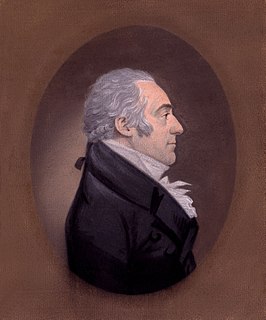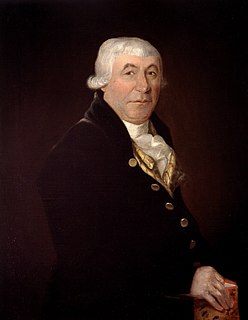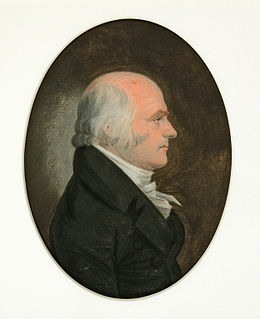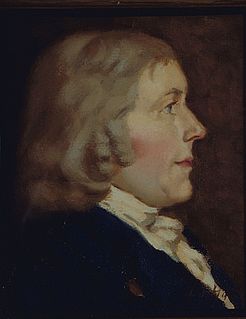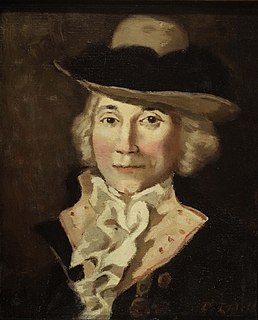| Toussaint Pothier | |
|---|---|
 | |
| Member of the Legislative Council of Lower Canada | |
| In office 1824–1838 | |
| Personal details | |
| Born | May 16, 1771 Montreal, Province of Quebec |
| Died | October 22, 1845 (aged 74) Montreal, Canada East |
Toussaint Pothier (May 16, 1771 – October 22, 1845) was a businessman, seigneur and political figure in Lower Canada.
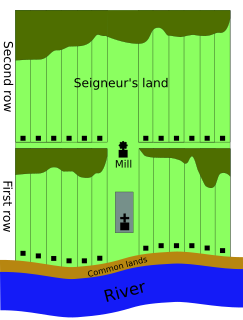
The manorial system of New France was the semi-feudal system of land tenure used in the North American French colonial empire.

The Province of Lower Canada was a British colony on the lower Saint Lawrence River and the shores of the Gulf of Saint Lawrence (1791–1841). It covered the southern portion of the current-day Province of Quebec, Canada, and the Labrador region of the modern-day Province of Newfoundland and Labrador.
He was born Jean-Baptiste Pothier in Montreal in 1771, the son of Louis-Toussaint Pothier, a merchant and one of the founders of the North West Company. He worked for the Michilimackinac Company, a fur trading company, and, later, for its successor, the South West Fur Company. He purchased the seigneuries of Lanaudière and Carufel in 1814 and also owned a large amount of land in the centre of Montreal.
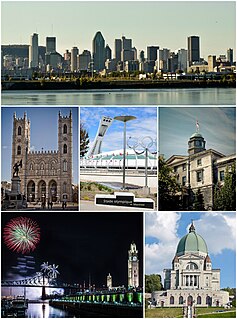
Montreal is the most populous municipality in the Canadian province of Quebec and the second-most populous municipality in Canada. Originally called Ville-Marie, or "City of Mary", it is named after Mount Royal, the triple-peaked hill in the heart of the city. The city is centred on the Island of Montreal, which took its name from the same source as the city, and a few much smaller peripheral islands, the largest of which is Île Bizard. It has a distinct four-season continental climate with warm to hot summers and cold, snowy winters.

The North West Company was a fur trading business headquartered in Montreal from 1779 to 1821. It competed with increasing success against the Hudson's Bay Company in what is present-day Western Canada. With great wealth at stake, tensions between the companies increased to the point where several minor armed skirmishes broke out, and the two companies were forced by the British government to merge.
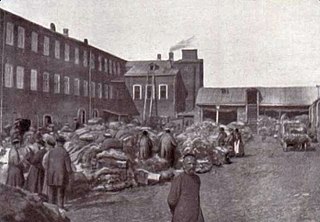
The fur trade is a worldwide industry dealing in the acquisition and sale of animal fur. Since the establishment of a world fur market in the early modern period, furs of boreal, polar and cold temperate mammalian animals have been the most valued. Historically the trade stimulated the exploration and colonization of Siberia, northern North America, and the South Shetland and South Sandwich Islands.
Pothier helped capture Michilimackinac during the War of 1812. In 1820, he married Anne-Françoise, daughter of Ralph Henry Bruyeres. He served as a member of the Legislative Council of Lower Canada from 1824 until it was dissolved in 1838. He also served on the first and third Special Councils which administered the province after the Lower Canada Rebellion. After the union of Upper and Lower Canada, he retired from politics.
Michilimackinac is derived from an Odawa name for present-day Mackinac Island and the region around the Straits of Mackinac between Lake Huron and Lake Michigan. Early settlers of North America applied the term to the entire region along Lakes Huron, Michigan, and Superior. Today it is considered to be mostly within the boundaries of Michigan, in the United States. Michilimackinac was the original name for present day Mackinac Island and Mackinac County.

The War of 1812 was a conflict fought between the United States, the United Kingdom, and their respective allies from June 1812 to February 1815. Historians in Britain often see it as a minor theater of the Napoleonic Wars; in the United States and Canada, it is seen as a war in its own right.
The Legislative Council of Lower Canada was the upper house of the bicameral structure of provincial government in Lower Canada until 1838. The upper house consisted of appointed councillors who voted on bills passed up by the Legislative Assembly of Lower Canada. The legislative council was created by the Constitutional Act. Many of the members first called in the Council in 1792 had served as councillors in the Council for the Affairs of the Province of Quebec.
In 1839, Pothier was named sheriff for Montreal district, but served only five days. With Peter McGill, he was involved in the construction of the Champlain and St Lawrence Railroad, the first railway in the province. Around 1841, he suffered a series of financial losses which led to him declaring bankruptcy.
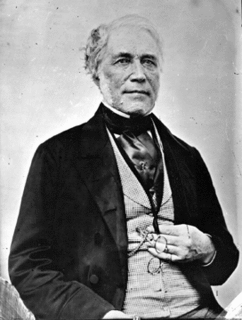
Peter McGill was a Scots-Quebecer businessman who served as the second mayor of Montreal, Canada East from 1840 to 1842.
He died in Montreal in 1845.
His daughter Jessé-Louise later married George-Paschal Desbarats, the Queen's Printer.
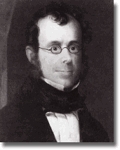
George-Paschal Desbarats was a French-Canadian printer, publisher, businessman, and landowner. From 1841 he co-held an exclusive contract as the Queen's printer.

